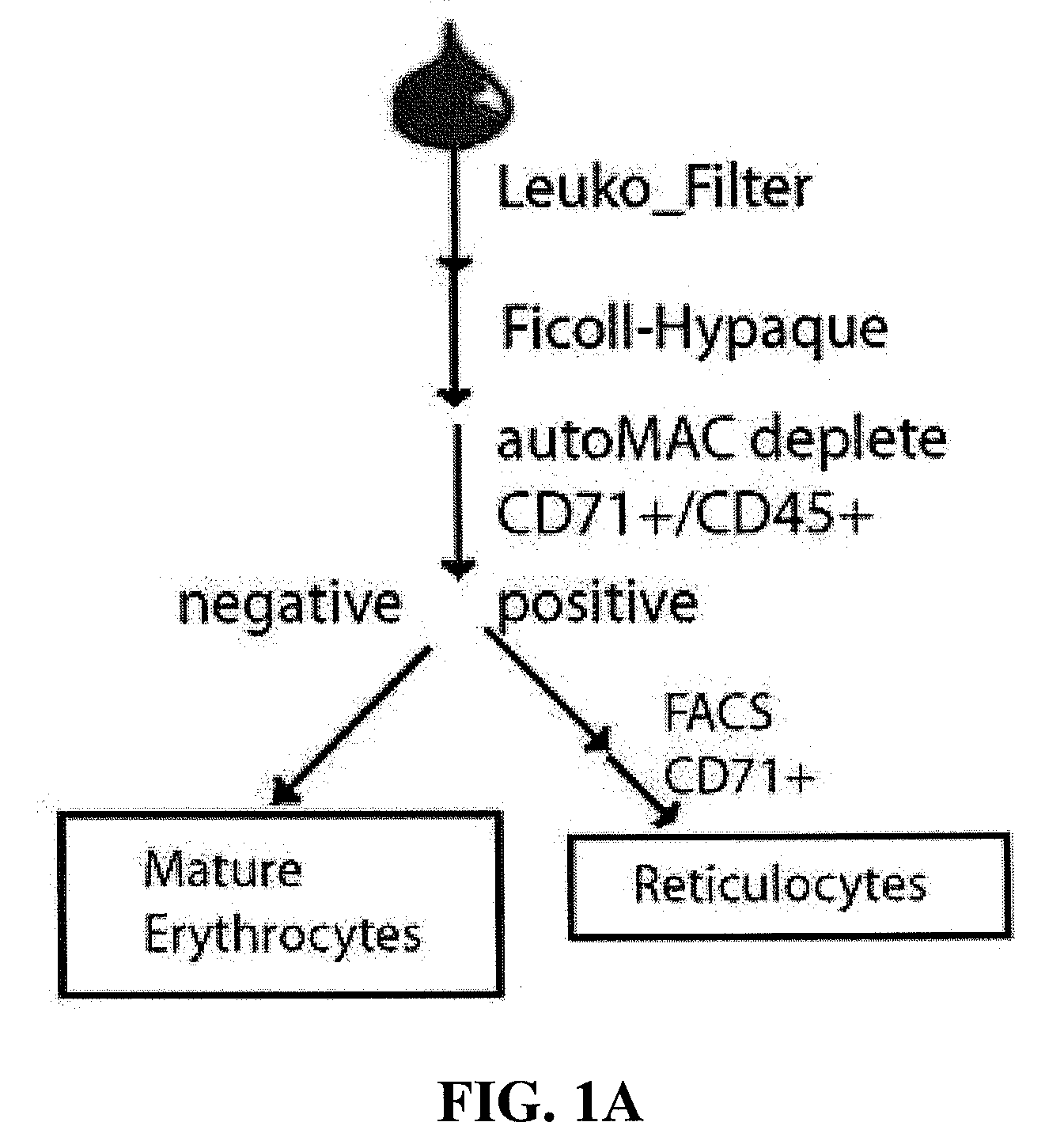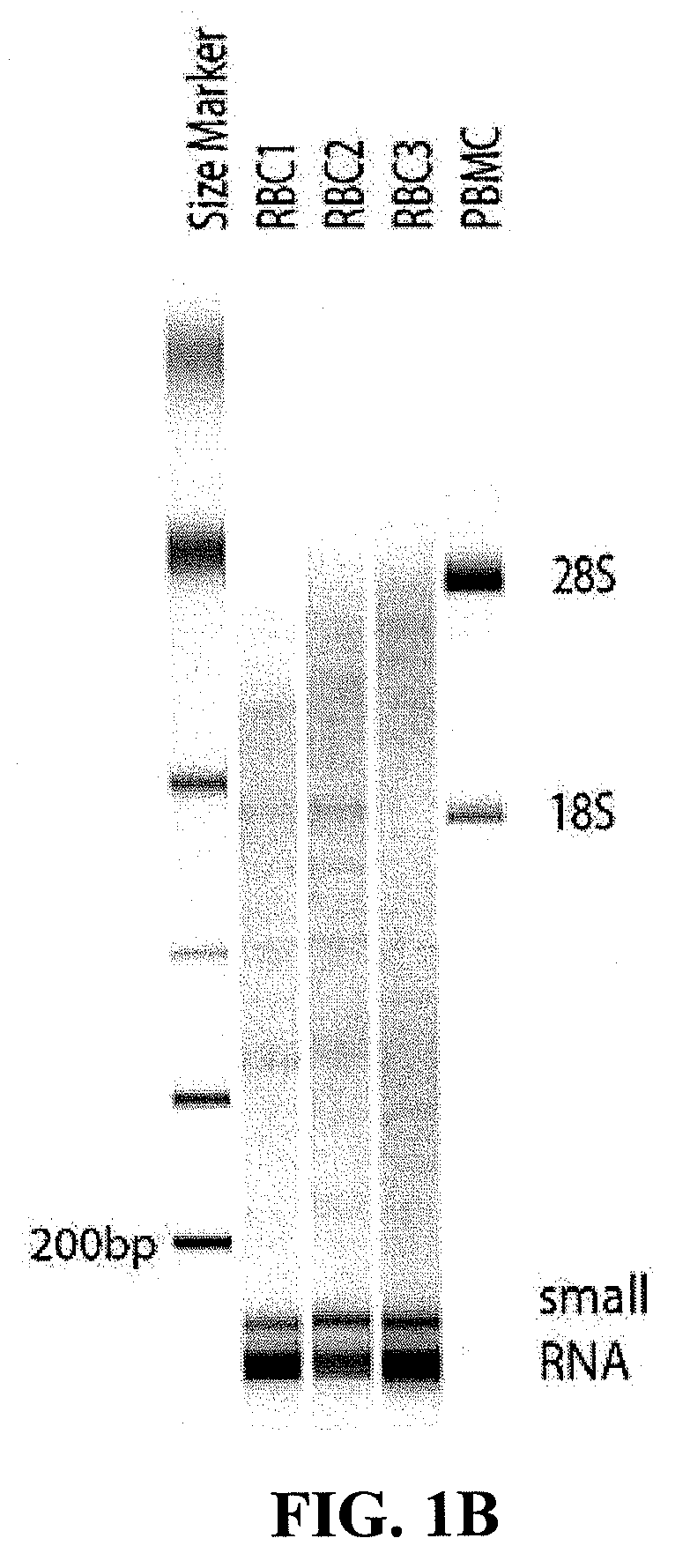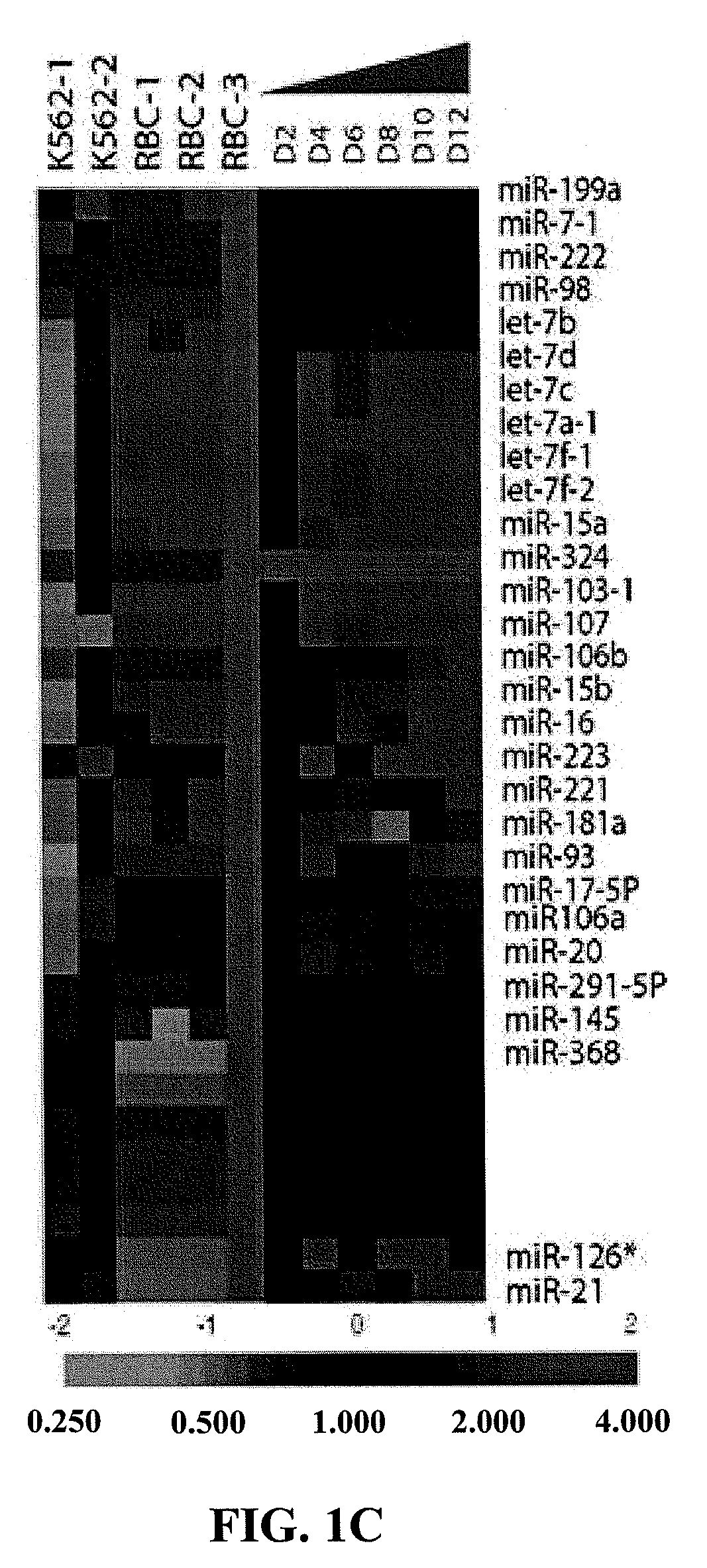Methods and compositions for the treatment of erythrocyte diseases
a technology of erythrocytes and compositions, applied in chemical methods analysis, instruments, genetic material ingredients, etc., can solve the problems of inability to face these challenges, limited understanding, and inability to fully explain the molecular basis of scd erythrocyte heterogeneity and abnormal interaction with malaria parasites, so as to increase the life-span of erythrocytes and increase survival
- Summary
- Abstract
- Description
- Claims
- Application Information
AI Technical Summary
Benefits of technology
Problems solved by technology
Method used
Image
Examples
example 1
Functional microRNAs in Human Mature Erythrocytes
Discovery of Abundant and Diverse MiRNAs in Human Mature Erythrocytes
[0173]To test the possibility that mature erythrocytes contain previously undetected RNA species, we first developed a protocol to obtain a pure population of mature erythrocytes without other contaminating cell types. Blood from healthy volunteers went through a PurecellNeo filter to remove most leukocytes and then a Ficoll-hypaque density gradient to separate erythrocytes from leukocytes and platelets. Any remaining leukocytes (CD45+) and reticulocytes (CD71+) in the packed erythrocyte pellets were further removed via magnetic immuno-depletion in an AutoMac machine to yield the mature erythrocytes (FIG. 1A). The cell purity was confirmed by the surface expression of lineage-specific markers and found to be 99.8% positive for the erythrocyte-marker CD235a while negative for leukocyte (CD45, CD16) and reticulocyte (CD71) markers (data not shown). These FACS results c...
example 2
The Role of MiRNAs in the Host-Pathogen Interaction Between Erythrocytes and Plasmodium falciparum
[0195]During the intraerythrocytic life cycle of malaria parasite P. falciparum, significant material exchanges occur between the erythrocyte and parasite (Barkan et al. (2000) Int. J. Parasitol. 30: 649-653). To test the possibility that erythrocyte miRNA plays a functional role in erythrocyte-Plasmodium infection, we first determined whether certain erythrocyte miRNAs are found in the parasite. We placed synchronized P. falciparum into washed fresh erythrocytes and maintained them in a hypoxic atmosphere with 5% O2, 5% CO2, and 90% N2. Erythrocyte-free parasites were obtained by selective lysis with 0.15% saponin and the total (including small) RNAs contained in the parasites were collected at 8, 16, 32, and 40 hours, roughly corresponding to early ring, late ring, late trophozoite, and middle schizont stages of intraerythrocytic infection (FIG. 5A). When we analyzed the size distrib...
example 3
The Identification of Erythrocyte MiRNAs Distinguishing SCD Subtypes and Other Anemia Disorders
[0199]Based on our finding that human mature erythrocytes possess abundant and diverse miRNAs, we aim to bring state-of-the-art genomic tools and advanced bioinformatics to analyze the erythrocytes of SCD and other anemia disorders to gain a deeper understanding of their clinical heterogeneity and erythrocyte phenotypes. We will also identify miRNAs associated with particular phenotypes of SCD.
[0200]As noted above, erythrocyte miRNA provides information about the developmental history and turnover kinetics of erythrocytes, we reason that their composition may thus indicate the severity, features and clinical phenotypes of the erythrocyte disorders. In this aim, microarray is used to capture the global miRNA expression and various bioinformatics tools are used to analyze and extract the biological information. HbSS samples are analyzed to determine HbSS subtypes with significant differences...
PUM
| Property | Measurement | Unit |
|---|---|---|
| Fraction | aaaaa | aaaaa |
Abstract
Description
Claims
Application Information
 Login to View More
Login to View More - R&D
- Intellectual Property
- Life Sciences
- Materials
- Tech Scout
- Unparalleled Data Quality
- Higher Quality Content
- 60% Fewer Hallucinations
Browse by: Latest US Patents, China's latest patents, Technical Efficacy Thesaurus, Application Domain, Technology Topic, Popular Technical Reports.
© 2025 PatSnap. All rights reserved.Legal|Privacy policy|Modern Slavery Act Transparency Statement|Sitemap|About US| Contact US: help@patsnap.com



